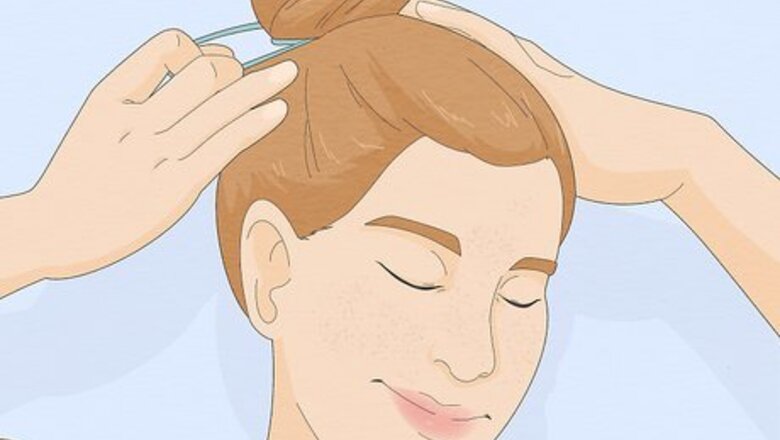
views
Put your hair up.
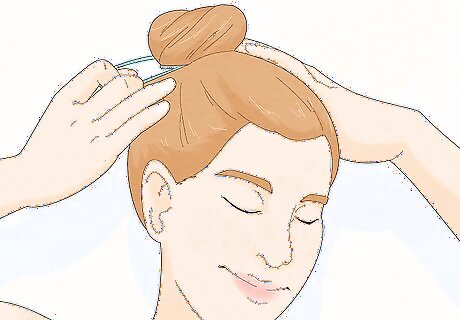
Wear your hair in a high bun to keep loose strands out of the water. Putting your hair up also makes it easier to wear a swim cap so you can really keep water out. If you have natural Afro-textured hair, you can also opt for flat twists or bantu knots. Try out a braided bun, a ballerina bun, or a topknot to keep your hair away from the water. A regular braid, french braid, or fishtail braid will help keep your hair tangle free, but those hairstyles might not keep your hair dry.
Choose a silicone swim cap.

Silicone caps are more waterproof than latex/rubber or lycra options. They’re made of a thick material and offer a tight seal. A properly fitting cap will keep your hair significantly drier than if you don’t wear a cap, but some water still might seep through. You can even double up on swim caps, as long as it doesn’t feel tight or uncomfortable! Try putting a latex/rubber cap under a silicone cap. Slip your goggles strap in between the two layers to keep them in place.
Wear a shower cap under a swim cap.

Slip a shower cap under a silicone cap for an extra waterproof barrier. Shower caps aren’t made to be submerged on their own since they’ll slip off, but the silicone cap will keep it in place. Just don’t try using a shower cap without another cap on top! Use a new shower cap so that the elastic isn’t stretched out.
Wear a waterproof headband.
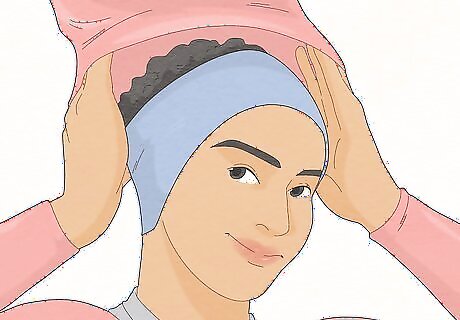
Pair a silicone headband with a swim cap for a better seal. Silicone headbands go over your ears and forehead to make sure no water can seep into your cap. If you don’t want to wear a cap, try any waterproof headband on its own. A headband can help keep your hairstyle in place so you won’t have to worry about loose strands getting wet.
Rinse your hair before getting in a chlorine pool.
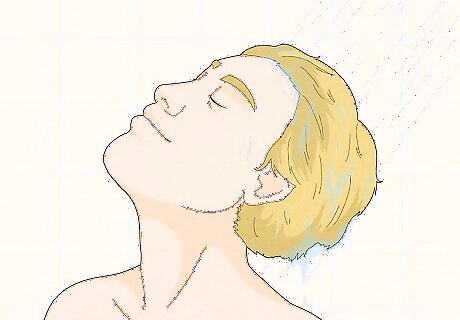
Make it harder for chlorine to soak into your hair. Your hair can only absorb so much water. By rinsing your hair with clean water before you get in the pool or ocean, you prevent chemicals and excessive salt from saturating (and damaging) your hair. Soak your hair under clean water for at least 5 minutes. This method can help prevent your hair from turning green from the chlorine.
Add natural oils for extra water resistance.
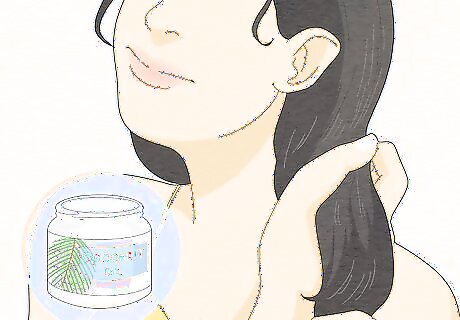
Oil repels water and can lock in your hair’s moisture. Try applying coconut oil or olive oil to your locks before you jump in the pool. If you choose this option, wear a swim cap or keep your hair covered. Oil can make your hair more prone to sun damage. Give the oil 15 minutes to soak in.
Apply leave-in conditioner before you swim.
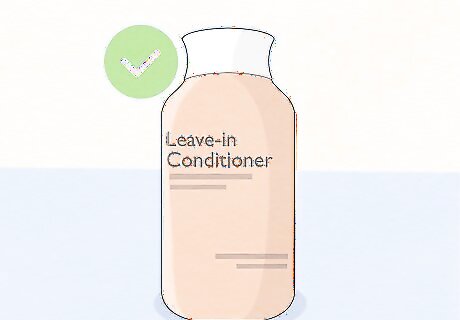
Pre-treat your hair to protect it from pool chemicals and saltwater. Leave-in conditioner won’t keep your hair dry, but it will reduce damage from chlorine, since chlorine makes your hair brittle and weak. Apply some leave-in conditioner sparingly before you get into the pool, and wear a swim cap over your hair to moisturize your hair as you swim. Apply the leave-in conditioner starting from the middle of your hair strands to the tips. Avoid applying the product starting from your roots, as this would be an excessive amount of conditioner. Try not to use styling products like hair gel and pomade before you go swimming. They often have chemicals that will react with the chlorine or salt water.
Rinse your hair immediately after swimming.
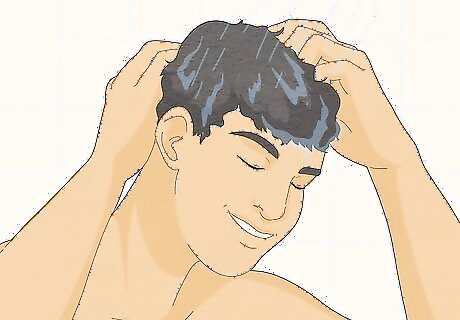
Get the chlorine or saltwater out as quickly as possible to stop damage. Take advantage of poolside or beachside public showers and quickly rinse off. Even if you can’t shampoo right away, a fast water rinse is better than letting the chemicals sit and seep into your follicles. Chlorine strips your hair of its natural oils and can cause chemical reactions that lead to brittle hair with split ends.
Use clarifying shampoo to eliminate harsh chemicals.
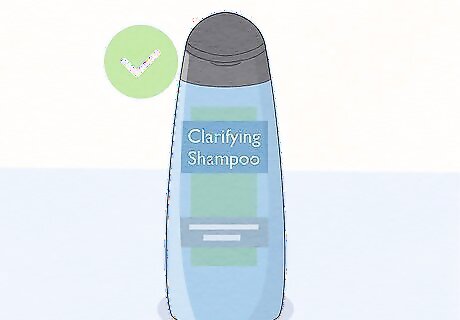
Restore your hair with clarifying shampoo. When you wash your hair after a swim, you want to restore your scalp’s balance. Clarifying shampoo helps break down residual oil, minerals, chemicals, and other impurities that build up in your hair. Clarifying shampoos might also be labeled “purifying” or “detoxifying.”
Apply an apple cider vinegar rinse for a natural cleanser.
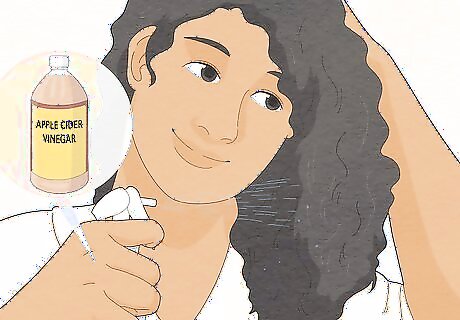
Make your own clarifying shampoo for a post-swim hair treatment. Apple cider vinegar will help remove dirt, chlorine, and salt. Just mix one part apple cider vinegar with four parts water. Pour or spray the mixture over your hair, and massage it in like shampoo. Then, rinse with clean water. This rinse can also remove dead skin cells and unclog your follicles.
Deep condition your hair to restore moisture.
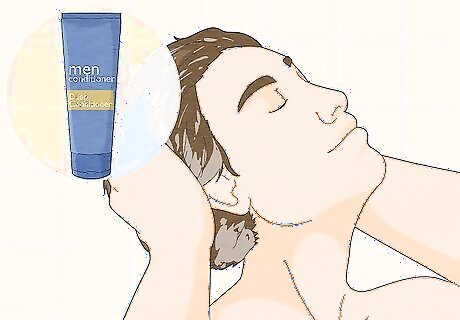
Add a moisture boost after exposing your hair to chlorine, sun, and salt. Either apply a leave-in conditioner or go for heavy oils like castor oil, shea butter, or coconut oil. Moisturizers don’t actively add new moisture, but they work by making a barrier to lock in your hair’s natural moisture. You can even make your own hair mask at home for an ultra-luxurious way to restore shine and moisture to your hair.




















Comments
0 comment